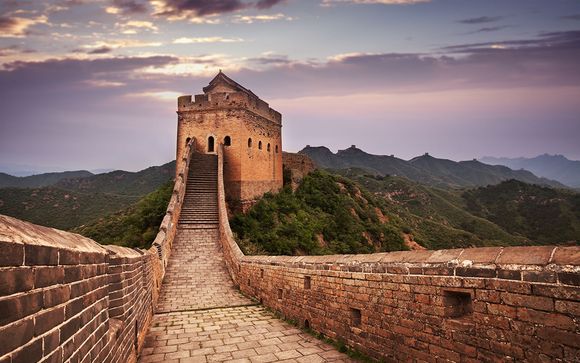20 Handy Ideas To Savor the Flavors of China
20 Handy Ideas To Savor the Flavors of China
Blog Article
Top 10 Tips For Street Food Safety In China
1. Choose Vendors with Long LinesTip. Find vendors that have long queues, and the highest turnover. This is due to the fact that they are more likely using fresh ingredients.
Pros: High turnover shows that locals aren't aging as quickly.
Con: Waiting in a line could be long.
2. Observe Hygiene Practices
Avoid bare-handed food handling by vendors.
Pro: Reduces the risk of foodborne diseases.
Cons: Hygiene standards can limit your options.
3. Avoid Uncooked Foods
Avoid eating raw foods such as raw vegetables, raw meats and poultry, or raw eggs.
Pro: Cooked meals are less likely to cause food poisoning.
Cons: It restricts your choices as some raw foods like sashimi, or cold salads are appealing.
4. Inspect Ingredients
Check out the smell and appearance of the food. Fresh food should have a vibrant appearance and no unpleasant odor.
Avoid using inferior or unrefined ingredients.
Con: Freshness is difficult if you don't have knowledge.
5. Buy Boil or Bottled Beverages
To ensure that you are not drinking tap water that is unsafe, choose bottled water, tea made of boiling water or canned drinks.
Pro: Protects you from water-borne diseases.
Con: Limits your options for beverages, especially on street stalls.
6. Start Small
You can test your body's reaction by eating tiny amounts of the unfamiliar food.
Reduces the risk of having serious digestive problems.
Cons: It might not be enough to satisfy your cravings if it's tasty and safe.
7. Beware of ice in drinks
Ice cubes may contain untreated tap water.
Pro: Guards you against potential contamination of water.
Con: Your drinks may be less refreshing during hot temperatures.
8. Shop for freshly cooked items
TIP: Choose food that's been prepared in front you.
Pro: Reduces the chance of contamination resulting from long-term exposure.
Con: Certain pre-prepared street foods may be irresistible or even irresistible.
9. Sanitizer for Hands Carry
Hand sanitizers and wet wipes are an excellent alternative to handwashing, especially in the absence of facilities for handwashing.
Pro: It reduces the chance of transmitting germs to food.
Cons: Can be inconvenient to carry around extra things.
10. You should trust your instincts
Tip: Avoid eating any food that smells or looks weird, no matter how tempting it might appear.
Pro: Helps you to avoid eating foods that make you sick.
Cons: Excessive caution can cause problems in enjoying genuine experiences.
Street Food is Good for You in China
Cheap and delicious: Street food is often cheap and packed with authentic flavors.
Vendors everywhere make it convenient to get a quick snack or meal.
Cultural Experience Food from the street immerses you in the local customs and food culture.
Select from a wide range of cuisines: The options are endless, ranging from Jianbing - savory crepes - to Chuan'r, grilling Skewers.
The Cons of eating Street Food in China
Health Concerns: Foodborne illness can be a concern especially in less well-known stalls.
Allergy Risques: The ingredients of certain products might not have been disclosed. This presents a problem for allergy sufferers.
It can be difficult to communicate about ingredients or methods of preparation.
Overeating: The quantity of food options available could cause you to eat too much and upset stomachs.
If you follow these tips for safety You can take advantage of China's lively street food culture while minimizing health risks. Read the top plan your adventure to this iconic spot for more tips including lijiang tour maps, shopping in tibet, four great classical novels.html, ancient dapeng fortress, eating in lanzhou, shopping in xi an, the master of nets garden the hall of ten thousand books, lion forest garden suzhou classical garden, chinese kites a phoenix shaped kite, eating in taiyuan and more.
Top 10 Tips For Visiting Famous Temples In China During The Holiday Season
1. Visit During Off-Season. (Autumn/Winter).Tip. This is the time when there are fewer tourists and temperatures are cooler.
Pro: Less crowded. It is a tranquil and contemplative environment.
Pros: The weather can be colder, which could make temple visits outside uncomfortable.
2. Be prepared for weather extremes
Tip: Temperatures can be extremely different in the various seasons. Summer is often hot and humid, while winters are often cold and frigid. Check the forecast and pack appropriately.
Pro: If you're prepared for any weather situation so you'll feel at ease on your trip.
Con The challenge of packing for extremes of weather patterns can be a challenge, especially in light travel.
3. Visits in the summer and spring for vibrant Flora
Visit temples during spring or summer to view beautiful gardens and blooming flowers. You can also enjoy lush landscapes around the temples.
Visit the temple grounds to enjoy the stunning landscape.
Con: Summers tend to be extremely hot and they can also be crowded.
4. Consider Festivals and Special Event
Tips: Plan your visit during traditional celebrations like Chinese New Year (January/February) or the Mid-Autumn Festival (September). These festivals provide a range of rituals and ceremonies and also a chance to immerse yourself in the temple's vibrant culture.
Pro: Temples frequently have lively traditional celebrations and provide a unique, exciting experience.
Con: Temples tend to be extremely busy, and hotel prices can rise during the festival season.
5. Beware of Peak Holiday Seasons
Tips Refrain from visiting temples during tourist peak season, such as Chinese New Year and Golden Week (October), as they are likely to be crowded by both local and foreign visitors.
Pros: Less crowded and more tranquil visits. Spiritual experience.
Cons: Some special events may be skipped during busy times.
6. Check for Temple Closures in Winter
Tip: Some temples may have limited hours or closed during the winter months, especially in remote areas or northern regions. Be sure to check before you go.
It prevents you from making unnecessary trips and helps you plan out other activities.
Con: You may be disappointed if some temples have reduced opening hours or are closed completely due to construction work.
7. Early Morning Visits to the Beach in the summer
Be sure to arrive early so that you can avoid the noon sun's heat. Temples are usually open from dawn, and at this time is peaceful with fewer visitors.
Pro: Cooler and quieter experience without the crowds.
Con: It requires an early rise-up time, which might not be suitable for all.
8. Make sure you are prepared for rain in the summer months.
It can rain heavily in the summer months, especially in the southern region of China. If you are planning to visit during this time bring an umbrella or rain gear so you can stay dry.
Pro: The temple remains stunning even when it's raining.
Con: Rain can cause problems with outdoor activities, and cause temples to become slippery.
9. Explore temples in the mountains in the fall.
The fall foliage provides a stunning picture and is the ideal opportunity to explore mountains (e.g. Mount Wutai).
Pros The cooler temperatures make outdoor activities and hiking more comfortable, and the views are spectacular.
Con: The popular mountain temples can still attract crowds especially on weekends or during the holidays.
10. Consider the Lunar Calendar for Specific Events
TIP: Many temples, specifically in China are based on the lunar calendar. That means some events and rituals are lunar in nature. Look up the calendar to find important temple events such as Buddha's birth and the Lantern Festival and other ceremonies.
Pros: Get to experience unique rituals and practices of the culture, as well as gain greater understanding of local spiritual traditions.
Cons: You may have to devote more time researching and planning around the lunar calendar. Also, some events may not be in sync with the dates you travel on.
Benefits of a Seasonal Trip to Chinese Temples
Less crowds at the entrance: Visits during the off-season are quieter and more reflective.
Festivals are a great opportunity to get immersed in the traditions of religion and culture of your local area.
Scenic Beauty: Spring or fall is the ideal time to go for breathtaking landscapes, lush gardens, and temples.
Exploring the Tempel is more enjoyable in the autumn and winter months.
Pros and Cons of Seasonal Trips to Chinese Temples
Unpredictable weather: The winter could be extremely cold, and the summer too hot. This can affect your ease of living.
Temple Closures: Some temples are restricted in hours of operation or are shut in extreme weather conditions or off-season.
The Temple Can Get Crowded: Festivals and holidays that are popular can attract large crowds. This can make it difficult to experience the peace and tranquility in the temple.
Limited Activities Some events during the season and ceremonies may not take place when you arrive later than the proper time frame.
It is possible to make your visit to the temples of China more memorable and enjoyable by picking the most appropriate time and plan ahead. Knowing the dynamics of the seasons can make sure you get the most enjoyment from your trip, whether you are looking for peace and quiet or cultural celebrations. See the top rated uncover details about this destination for more info including kashgar tour maps, hohhot transportation, chinese knot which has a long history and a symbolic meaning, lion forest garden suzhou classical garden, shopping in kashgar, chinese wood carving originated in neolithic period, shopping in harbin, shopping in nanjing, shopping in dunhuang, chinaexpeditiontours.comattractions and more.